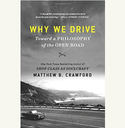In an April 29, 2013 interview on NPR’s Fresh Air, comedian, podcast host, and author of the book Attempting Normal, Marc Maron, had this to say when asked about how pornography played a part in his sexual development:
“I don’t know that I would call myself a connoisseur as much as someone who uses it...
It's profound how much of it is out there, and there isn’t really a cultural conversation about it anymore. I personally think it's somewhat dangerous. And to answer your question, I try to frame it as almost like a drug that you have to be careful with... I think that porn addiction is going to be big business eventually, I don’t know how it could not be.”
Marc Maron is no moral crusader, and does not find pornography to be morally objectionable, and yet he is very frank about his concerns that the internet has become saturated with it and the serious personal and cultural effects that follow. Now that we have twenty or so years experience in the internet age, his is not the only voice calling for another look at pornography’s cultural impact.
Pamela Paul in Pornified: How Pornography Is Damaging Our Lives, Our Relationships, And Our Families, has assembled a compelling journalistic account of just how far-reaching the effects of pornography are in our society. She conducted over a hundred in-depth interviews, and commissioned the first nationally representative poll of Americans to deal primarily with pornography. The results of her investigation confirm time and time again the description given by Maron. For Paul, the porn industry is the new Big Tobacco, preying on the highly addictive power of its product, falsifying its negative effects on the consumer, and inserting itself into every aspect of the culture.
Paul traces its metamorphosis over the last generation from stashes of softcore magazines hidden under the bed to unlimited streaming of high-definition videos of the most deviant forms of sexuality. The technological advancement from video cassettes to pay-per-view cable to the internet and now handheld devices has allowed the industry to provided men with a product that was completely unavailable a generation ago. It has gone from dirty little secret to accepted, even glorified, mainstream, male recreation.
Pornified’s greatest strength lies in the frank admissions of her interviewees. While Paul doesn’t disclose how she chose her subjects, they are demographically representative of American men aged twenty to fifty-nine. What is most striking about these testimonies is the across-the-board way that pornography forces them to live a double life. Some of these men are self-identified feminists and would never dream of treating their girlfriend or wife in the degrading manner they see on their screens, and yet they continue to find themselves clicking away. They insist they can keep the two separate and often don’t tell their loved ones about their pornography use. This duplicity leads to a divorce of their libido from their partner so that they eventually need pornography in order to function sexually with them. Almost all of those interviewed confessed to a progressive use of pornography: in time and money devoted to it, in the increased deviancy of the images viewed, in preoccupation with it outside of viewing, and as a necessary condition for sexual arousal inany situation.
But if almost all the users seem to understand that pornography is not good for them, or at least is neutral in itself but can become an obsession, like fantasy football, why do they continue to use it? Paul suggests that the false sense of accomplishment in pleasing a women without the risk of rejection gives men a sense of power over their need to be affirmed by a woman – like the “cheat” mode in a computer game, where you win no matter how poorly you play. And the testimonies show that many men turn to it during times of loneliness, rejection, and high stress as a way to feel in control.
Paul doesn’t leave out the feminine perspective on porn either. She decries how a pornified culture has taught contemporary girls that to be a liberated woman is to be okay with porn, even encouraging it as an empowering mode of self-expression. However, women nearly universally see their husband’s or boyfriend’s use of porn as a profound betrayal. Women feel trapped in a cutthroat competition where they are being underbid for their guy’s affection by the low-cost, instant availability of airbrushed, surgically enhanced nymphomaniacs.
It is not a surprise then that pornography is becoming a significant factor in an increasing number divorce cases, not only because of the effect on women but because their children are being exposed to it. This is leading to an entire generation of men growing up learning to cue sexually to a computer screen.
Paul is a realist and advocates that we should censure, rather than censor pornography. Through proper sexual education, by framing pornography as a commercial product rather than free speech, and by exposing the harmful reality of pornography, Paul believes a negative cultural attitude, like the present one towards cigarettes, or hydrogenated oils, can be established.
The biggest problem with Paul’s book is her reliance on the harm principle to validate her condemnation. She has trouble making a distinction between purportedly sex-positive erotica and degrading pornography. She never articulates her own vision for an authentic and healthy sexuality. Neither does she confront the underlying absolutism of license that forms the basis for our cultural conversation. In addition, her empirical data does not include enough explanation of the methodology behind either the selection of her interviewees or the results of her poll. It does not rise to level of quantitative scientific research.
But this is not within the scope of her journalistic objective of raising awareness about what is happening in the world right now. This approach is also the book’s strength. Showing how pervasive pornography has become by qualitatively detailing the corrosive effect it has on men, women, and children, in their own words, is a great service. This book is ideally for those who are not aware of how pornified the culture has become, and are not yet open to moralistic arguments. To that end she includes shockingly graphic details about the filth that anyone surfing the internet is likely to encounter, and the sensitive reader should be aware of that before picking it up.
For those who need no additional convincing of pornography’s corrosive effect and who may be victims of its addictive power, William Struthers’ Wired for Intimacy is the perfect next step. Struthers is a psychologist at Wheaton College in Illinois, whose specialty is in the neurobiology of behavior. Through his experience in research, teaching, and counseling at Wheaton he has assembled an accessible and comprehensive account of how pornography hijacks the male brain on a neurological level, and how its effects can be healed. His approach is integrative, addressing the biological, psychological, and spiritual levels involved in the addictive behavior of men. It is a model of Christian psychology.
He begins where Paul left off: decrying the pornified world we live in. He defines pornography using the language of the Catechism of the Catholic Churchand attacks the way our culture uses the excuses of constitutional freedom, the relativistic nature of artistic judgments, and the limitations of scientific certainty to ignore dealing with the problem. He lays out how the internet’s anonymity, accessibility, and affordability, combine with its collaborative nature to create a virtual community of porn-addicted men.
Struthers then further, and builds a principled moral case based on the nature of love and Christian revelation to demonstrate that porn inherently corrupts intimacy and reinforces unhealthy concepts of sexuality. Placing sexual intimacy within the context of marriage between a man and a woman, he highlights how pornography substitutes sexual technique for actual intimacy. He also makes a fine distinction regarding the guilt which properly steers one away from evil and the shame which erodes human dignity and traps one in it.
Like Paul, he identifies reasons why men find pornography attractive, but with greater depth. He also gives a stronger psychological treatment to the cognitive changes which result from pornography and their connection to deeper unmet needs for intimacy. He gives a thorough argument for including pornography addiction in the American Psychological Association’s list of neuroses, but also teases out the compulsive and impulsive behaviors that plague many men, but lie outside a clinical definition of addiction.
The best part of this book is the chapter on how neural pathways are formed and addictive patterns laid down. It demonstrates why they become so powerful, but in doing so demystifies them. When the road to addiction is thus mapped out and the parts of the process identified, the man trapped in it can have hope that there is an escape.
Healing begins with rooting out the degrading kind of shame pornography creates in its viewers, and replacing it with a true notion of what a man is and where his dignity comes from. Struthers offers an embodied relational understanding of the imago Dei as the best model for reintegrating a healthy sexuality in men. He casts a vision of the human being as created in a body and ordered to a comprehensive goal of deepening intimacy with God and man – an intimacy that involves every part of the male body from genes to brain structure. In place of our cultural ideal of androgyny, he offers Jesus Christ as a model for authentic masculinity.
Struthers takes time to emphasize the male need for intimacy; an often overlooked fact in the pornography discussion because it is so often a case of divorcing sex from intimacy. The point is not that men are anti-intimacy, but that out of fear of rejection they try to manufacture a sham intimacy with their own fantasies, and porn is more than happy to help.
He concludes his book with a pastoral and clinical approach on how to rewire the porn-saturated male brain. He believes recovery should be viewed as a kind of spiritual formation that is part of the lifelong process of sanctification. The appendix includes several different resources for recovering from sexual addiction.
Struthers’ book is as complete and readable a treatment on the subject of pornography from a Christian perspective as one is likely to find. Those not convinced of the truth of the Christian witness may find the blend of science and faith a little off-putting, but it is essential to the process of healing and recovery that he lays out. Struthers, as a professor at a Protestant college, is writing primarily for that audience, but Catholics will see in his integrated relational view of the human person an opening to dialog with John Paul II’s Theology of the Body. It is here that Struthers could take his analysis further. For while he rightly places an emphasis on the context of intimacy for understanding sexuality, he sometimes does so at the expense of its procreative aspect.
Taken together Pornified and Wired for Intimacy are a fantastic one-two punch that takes the reader on an eye-opening journey into the inner circles of pornography and up the mountain of recovery to a vision of sanctified manhood that our pornified culture desperately needs.
Benjamin Petty is a seminarian for the Archdiocese of Washington, and received his MTS from the John Paul II Institute for Studies on Marriage and Family in Washington, DC.



